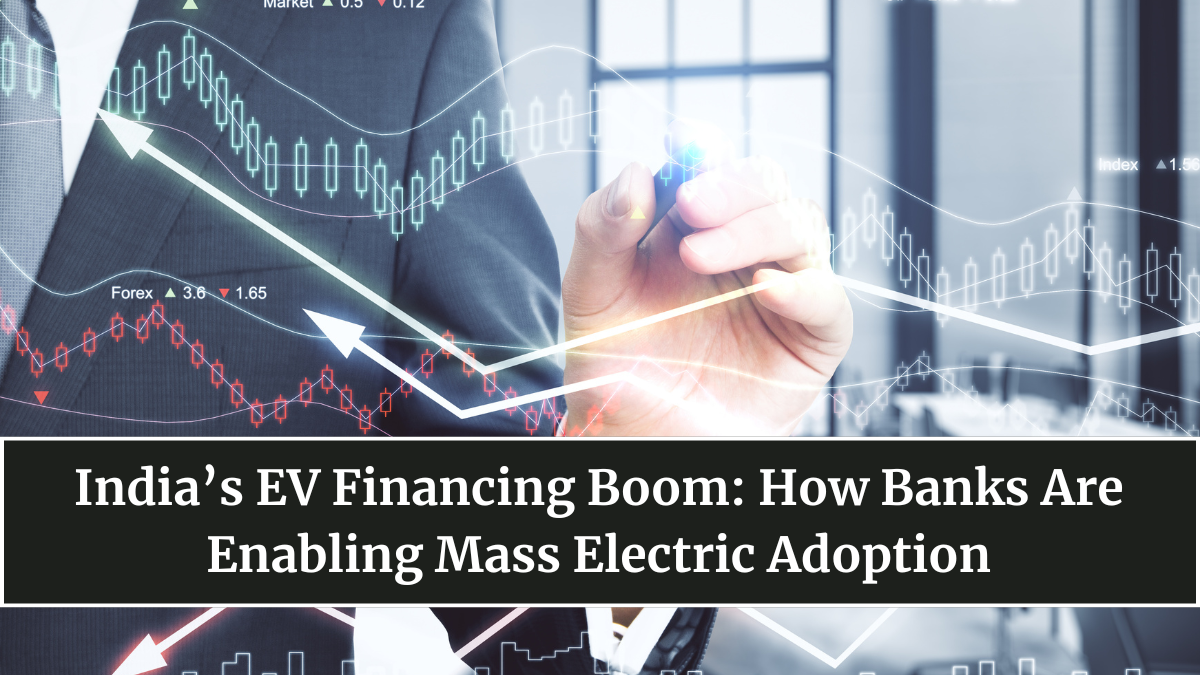Electric mobility in India is no longer a futuristic concept — it’s a fast-growing reality. But behind the surge in EV sales lies a powerful enabler often overlooked: EV financing. In 2025, Indian banks, NBFCs, and fintech startups are playing a transformative role in accelerating EV adoption by offering affordable loans, green finance schemes, and low-interest credit lines tailored specifically for electric vehicles.
As India pushes toward its goal of achieving 30% electric mobility by 2030, financial innovation has become just as important as technological innovation. With the right mix of incentives and structured financing, EVs are now becoming accessible to the mass market.

The Evolution of EV Financing in India
A few years ago, financing an electric vehicle was difficult due to high upfront costs and uncertain resale value. Traditional lenders were hesitant, given the lack of long-term data and the risk perception around new technology.
However, things have changed dramatically. In 2025, leading financial institutions such as State Bank of India (SBI), HDFC Bank, Axis Bank, and Tata Capital have introduced dedicated EV financing products. These include:
-
Low-interest loans with interest rates starting as low as 7.25%.
-
Longer loan tenures of up to 8 years for both two-wheelers and four-wheelers.
-
Zero-processing-fee offers under government-supported schemes.
-
Flexible EMIs tied to energy savings or mileage benchmarks.
Such initiatives are making EV ownership not only eco-friendly but also economically viable.
Government Support and Green Finance Policies
India’s central and state governments have played a crucial role in boosting EV financing through policy-driven incentives. The FAME-II (Faster Adoption and Manufacturing of Electric Vehicles) scheme, state-level EV subsidies, and green tax rebates have collectively reduced vehicle costs and risk exposure for lenders.
The Reserve Bank of India (RBI) has also recognized EVs under priority sector lending, encouraging banks to allocate more credit toward clean mobility. Additionally, the government’s Green Credit Program (2025) rewards financial institutions that achieve sustainability-linked lending targets.
These measures have attracted global investors and institutions like the World Bank and Asian Development Bank, which are injecting capital into India’s growing green finance ecosystem.
Fintech Startups Driving the New EV Loan Ecosystem
Beyond traditional banks, fintech startups are emerging as key players in simplifying the EV purchase process. Startups like RevFin, Ohm Mobility, and ChargeZone Finance are introducing digital-first loan solutions with instant approvals, data-based risk assessment, and flexible repayment models.
Some unique features of these fintech innovations include:
-
Telematics-based credit scoring, where driving behavior affects interest rates.
-
Subscription-style financing, allowing users to upgrade vehicles or batteries.
-
Pay-per-mile models for fleet operators and delivery companies.
-
Integration with charging networks, offering combined finance and energy plans.
These tailored models are helping small businesses, fleet owners, and individual consumers overcome entry barriers into the EV market.
Impact on the Indian EV Market
The rise of EV financing has had a direct impact on sales and adoption rates:
-
Two-wheeler EV loans now make up over 60% of total EV financing in India.
-
Fleet financing for last-mile delivery and ride-hailing companies has surged by 40% year-on-year.
-
Used EV financing is gaining traction, improving affordability for rural and tier-2 city consumers.
This financial inclusion is crucial for India’s EV revolution. It ensures that sustainability doesn’t remain an elite trend but becomes a mainstream mobility choice.
Key Challenges in EV Financing
Despite significant progress, challenges persist:
-
Battery depreciation remains a concern for lenders, affecting loan valuations.
-
Limited secondary market data for used EVs increases risk assessment difficulty.
-
Lack of unified insurance products for EV-specific components such as batteries and charging systems.
-
Awareness gaps among rural consumers regarding available financing options.
To address these, financial institutions are working closely with automakers, insurers, and government agencies to create standardized valuation frameworks and expand outreach programs.
The Road Ahead: Digital Green Finance Ecosystem
The next phase of EV financing in India is set to be digital, data-driven, and decentralized. Artificial intelligence and blockchain will play pivotal roles in automating loan approvals, improving transparency, and tracking sustainability-linked lending outcomes.
Expected trends by 2030 include:
-
AI-powered credit models assessing EV performance and driving behavior.
-
Battery leasing platforms lowering upfront costs for buyers.
-
Embedded financing directly integrated into EV booking apps.
-
Peer-to-peer green lending where individuals can invest in sustainable mobility.
As India moves toward a carbon-neutral economy, financial innovation will remain the backbone of this transition — ensuring that going electric is not just smart for the planet, but also for the wallet.
FAQs
What is EV financing?
EV financing refers to loans or financial products designed specifically for purchasing or leasing electric vehicles, often with lower interest rates and incentives.
Which banks offer EV loans in India?
Banks like SBI, HDFC, Axis, and ICICI now provide specialized EV loan products with favorable terms.
Are there government schemes supporting EV financing?
Yes, initiatives like FAME-II and priority sector lending under RBI guidelines promote EV financing.
Can I get a loan for an electric two-wheeler?
Absolutely. Many banks and NBFCs offer low-interest loans for electric scooters and bikes.
Will EV loans get cheaper in the future?
Yes. With policy backing and lower risk perception, interest rates for EV financing are expected to fall further by 2026.
Click here to know more.
